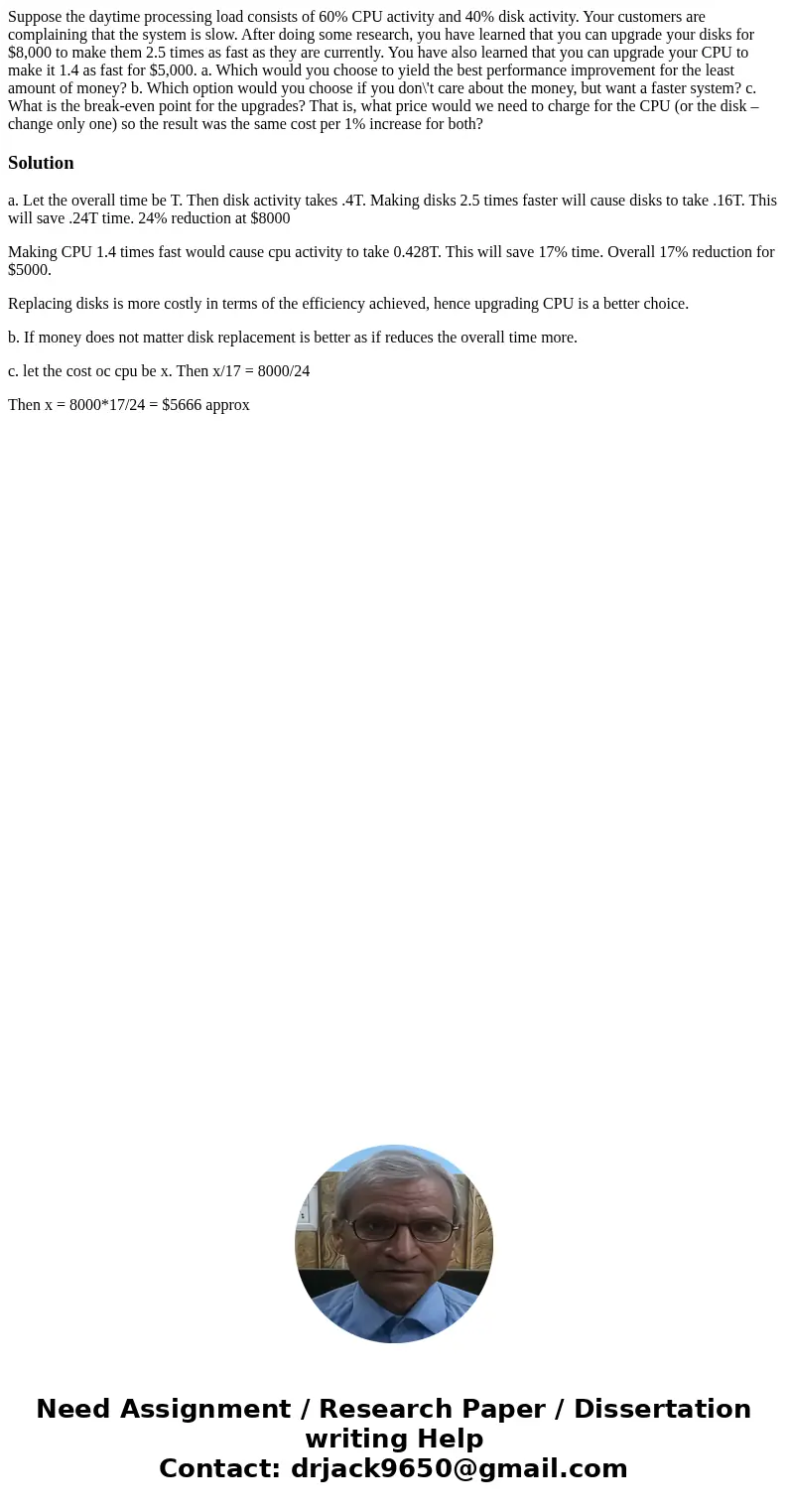Suppose the daytime processing load consists of 60 CPU activ
Suppose the daytime processing load consists of 60% CPU activity and 40% disk activity. Your customers are complaining that the system is slow. After doing some research, you have learned that you can upgrade your disks for $8,000 to make them 2.5 times as fast as they are currently. You have also learned that you can upgrade your CPU to make it 1.4 as fast for $5,000. a. Which would you choose to yield the best performance improvement for the least amount of money? b. Which option would you choose if you don\'t care about the money, but want a faster system? c. What is the break-even point for the upgrades? That is, what price would we need to charge for the CPU (or the disk – change only one) so the result was the same cost per 1% increase for both?
Solution
a. Let the overall time be T. Then disk activity takes .4T. Making disks 2.5 times faster will cause disks to take .16T. This will save .24T time. 24% reduction at $8000
Making CPU 1.4 times fast would cause cpu activity to take 0.428T. This will save 17% time. Overall 17% reduction for $5000.
Replacing disks is more costly in terms of the efficiency achieved, hence upgrading CPU is a better choice.
b. If money does not matter disk replacement is better as if reduces the overall time more.
c. let the cost oc cpu be x. Then x/17 = 8000/24
Then x = 8000*17/24 = $5666 approx

 Homework Sourse
Homework Sourse